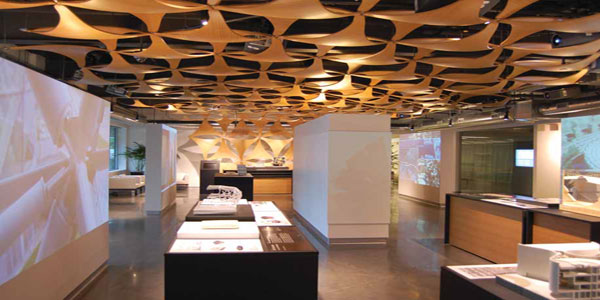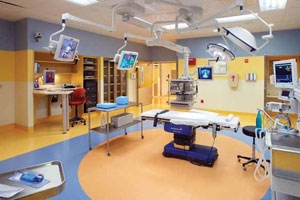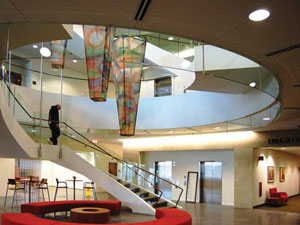
As the latest product of their ongoing partnership, the AIA California Council Integrated Project Delivery Steering Committee and the AIA National Integrated Project Delivery Interest Group have released Integrated Project Delivery: Case Studies, which is available, at no charge, at http://aia.org/ipdcasestudies. Researched and reported by Jonathan Cohen, FAIA, it examines six recent projects:
Autodesk, Inc.’s AEC Solutions Division Headquarters in Waltham, Massachusetts; Kling Stubbins, architect; Tocci Building Companies, builder.

Sutter Health’s Fairfield Medical Office Building in Fairfield, California; HGA Architects and Engineers, architect; The Boldt Company, builder.
SSM Healthcare’s Cardinal Glennon Children’s Hospital Expansion in St. Louis, Missouri; Christner Inc., architect; McGrath Inc., MEP Engineer; Alberici Constructors, Inc., builder.
SSM Healthcare’s St. Clare Health Center in Fenton, Missouri; HGA Architects and Engineers, architect; Alberici Constructors, Inc., builder.
Encircle Health LLC’s Ambulatory Care Center in Appleton, Wisconsin; HGA Architects and Engineers, architect; The Boldt Company, builder.
Arizona State University’s Walter Cronkite School of Journalism; City of Phoenix, building owner; Ehrlich Architects, design architect; HDR Architecture, executive architect; Sundt Construction, builder.

Through data collection and interviews with project participants, the study compares project goals and outcomes, enriched by narratives of project conception and execution. The projects were not “cherry-picked” to highlight success; in fact, they (plus one other Autodesk project covered in a sidebar) were the only completed projects in the country known to have used a pure form of IPD, which, for the purpose of the study, is defined by six characteristics:
Early involvement of key participants;
Shared risk and reward;
Multi-party contract;
Collaborative decision-making and control;
Liability waivers among key participants; and
Jointly developed and validated project goals.

The motivation behind the development of the Integrated Project Delivery Model is to align the interests of owner, architect, and builder, to encourage the collaborative setting of priorities and solution of problems. While the ultimate goal is to create better buildings, adherence to budget and schedule remain important indicators of success.
In each case, desired schedules were realized, or nearly so. Autodesk’s aggressive, 35-week schedule for design and construction grew to only 37 weeks, with the owner’s decision to introduce an atrium connecting the three floors of this 55,000 square foot TI project. St. Clare’s 27-month schedule was extended by three months by the owner, to accommodate the introduction of electronic medical records systems and because of a reevaluation of their plan to move during the winter holidays. Encircle’s 12 month construction schedule stretched to 13 months. Sutter achieved its overall schedule, despite a 3-month delay for program revision; while Cardinal Glennon and Cronkite beat their schedules. Budgets were similarly well controlled, and change orders, except those initiated by owners, were entirely eliminated in all six projects.
While the study sought the purest examples yet available of the IPD process, it nevertheless identifies significant differences among the project agreements and methodologies. Among these variables are the terms of the contractual relationships, the arrangements for sharing risk and reward, and the particulars of joint management structures.

All but one of the projects were realized under true multi-party contracts. The exception is the Cronkite School, which was a build-to-suit venture by the City of Phoenix for Arizona State University, financed by a city bond measure. It employed a two-way owner/designer-builder contract as prescribed by city procurement regulations. As the report describes, however, “The participants decided collectively that the only way to insure that the owner’s budget, schedule, and programmatic requirements could be met was to follow IPD principles in managing project delivery. The team made a conscious decision to sign the contract but not to let it dictate behavior.”
Three of the projects had arrangements for shared risk and reward. The Autodesk agreement included an Incentive Compensation Layer (ICL), through which the architect’s and builder’s anticipated profit could be reduced or increased, based on falling short of or exceeding measurable goals. An independent evaluator gave the team “high marks … for exceeding design expectations,” and the team received the incentive increase.
In the Cardinal Glennon project, $400,000 in funds saved out of the roughly $1 million contingency were distributed at project completion—40% to the owner, 20% to the design team, and 40% to the builder and its Lean partners MEP/FP and drywall). (Interestingly, design was already underway when the parties decided to adopt IPD.)
And for Encircle Health, “Architect and builder worked on a time-and-materials basis at a reduced billing rate, with a portion of anticipated profits placed at risk depending on project outcomes. The contract provide[d] for a performance contingency, consisting of at-risk profits, plus typical contingencies, with a formula to split funds remaining in the pot at the end of the project.”

The project Narratives and Lessons Learned are rich with recommendations, not only regarding the defining characteristics of IPD given above, but also on a set of additional characteristics considered highly desirable: mutual respect and trust, collaborative innovation, intensified early planning, open communication, Building Information Modeling (BIM), Lean principles, co-location of teams, and transparent financials.
While not without critical and cautionary observations, these cases studies encourage optimism. As Trent Jezwinski, The Boldt Company’s project manager on the Encircle Health project, reflects,
I’ve never had a job run this smooth in 23 years. There wasn’t any of that silo mentality—and to be able to move that feeling into the construction site is huge. I’ve never seen a project work as a team like this one did, from the top down and including the installers and guys in the field. When you have a hand in establishing the schedule and see how your trade fits into the whole process, you tend to believe in it and act accordingly. Slack is greatly reduced. The interactive scheduling process showed you the logic of where everything had to go – you trusted it and had ownership over it, and if you didn’t fulfill your promises you felt you had let down the team. If you have partners who are willing to change culturally then this process could work anywhere.
Originally published 4th quarter 2009 in arcCA 10.1, “Parametrics and IPD.”





